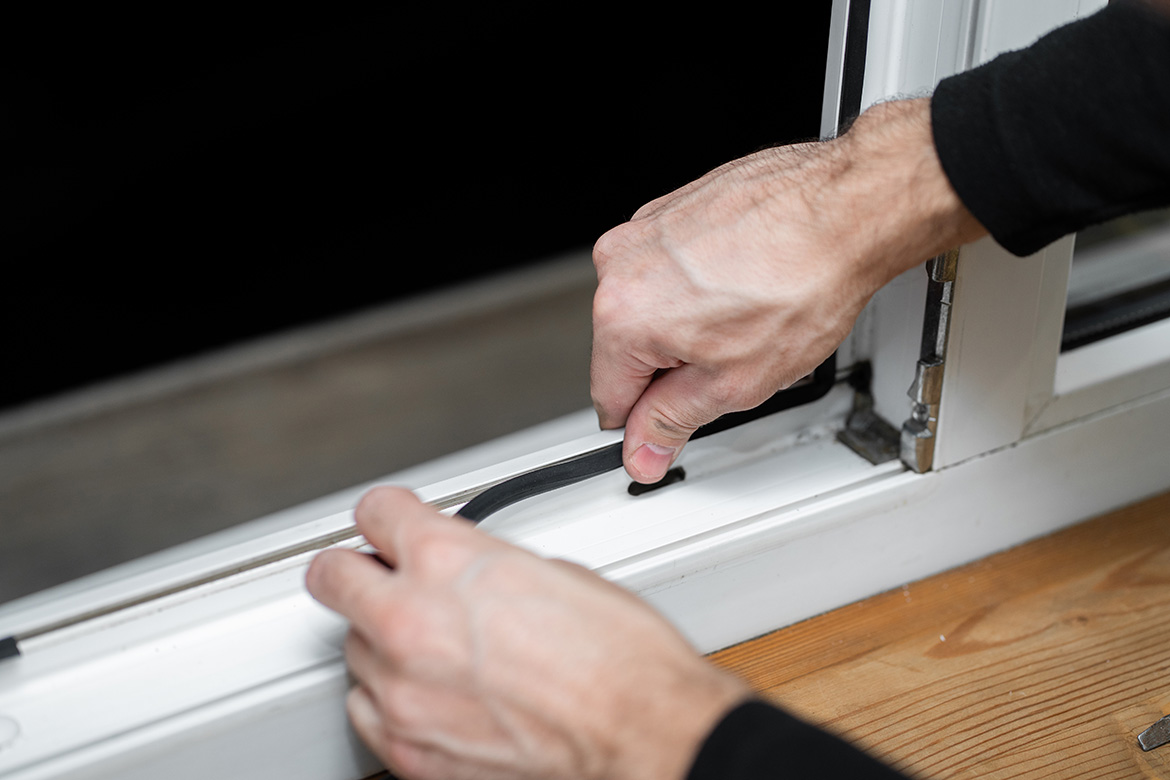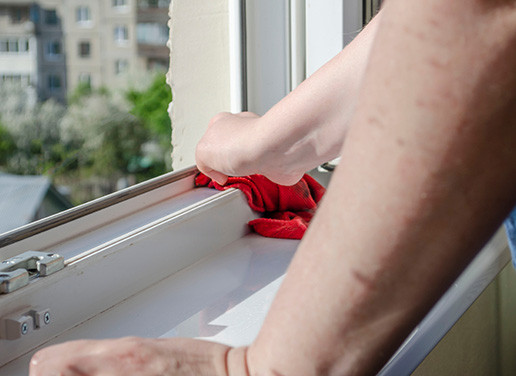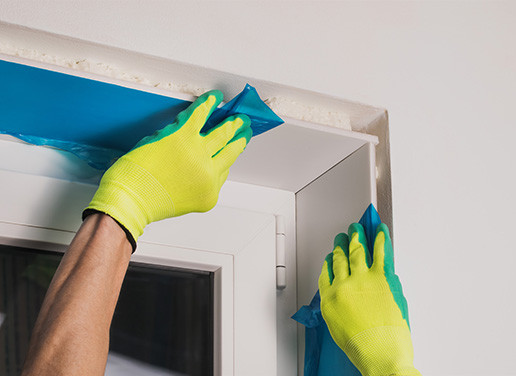Ущільнювачі для ПВХ-вікон: огляд, переваги та недоліки

Стулка пластикового вікна притискається до рами за рахунок ефективної роботи фурнітури. Але навіть найякісніша фурнітура не може забезпечити герметичний притиск пластика до пластику. Тому до конструкції додають ще один елемент — ущільнювач.
Для виробництва ущільнювачів використовують різні матеріали з високою еластичністю. За рахунок цього ущільнювач щільно прилягає до пластикової поверхні — і зазор перекривається максимально герметично.
Функції ущільнюючих контурів
Профіль з еластичного полімеру або виробляють одночасно з пластиковим профілем (коекструзія), або монтують у паз окремо. Ущільнювачі встановлюють до пазів на рамах, стулках, імпостах і інших елементах — тобто всюди, де потрібно щільно перекривати зазори. Конструкція ущільнювачів теж відрізняється, але зазвичай вони являють собою комбінацію двох елементів:
- Порожнин, які за рахунок повітряного прошарку підвищують теплоізоляційні показники.
- Пелюсток, які легко згинаються і щільно прилягають до площин.
Основна функція ущільнювача — герметизація для захисту від продування. Щоб захист був ефективним, в більшості профільних систем роблять не один, а два ущільнюючих контури. Але це — не межа: системи з максимальними показниками теплозбереження, на кшталт WDS 8S, комплектуються трьома контурами ущільнення.
Крім того:
- Ущільнювач захищає приміщення від пилу, який може проникати у щілину між рамою і стулкою.
- Крім пилу ущільнюючий контур утримує вологу. Навіть за умови значного тиску або при бічному вітрі вода не просочується в приміщення.
- Звукоізоляція. Чим щільніше притискання стулки до рами — тим менше шуму проникне в приміщення. Крім того, трубчастий ущільнювач підвищує шумоізоляційні характеристики вікна за рахунок наявності додаткової порожнини.
Різновиди ущільнюючих контурів
Віконні ущільнювачі роблять з різних матеріалів. Головна вимога — матеріал повинен бути досить еластичним, інакше він просто не зможе виконувати свою основну функцію. Сьогодні використовуються:
- Силікон. Служить до 30-40 років, зберігає еластичність як в спеку, так і в сильні морози. Крім того, якісні силіконові ущільнювачі не бояться ультрафіолетового випромінювання, тому добре забезпечують герметичність навіть при тривалій службі на відкритому повітрі. Через високу ціну використовуються досить рідко. Крім того, силікон не відрізняється міцністю, а після механічних пошкоджень не підлягає ремонту — тому найменший дефект стає причиною заміни.
- Гума (натуральний каучук). Складається з вулканізованої каучукової маси з додаванням сажі, відрізняється високою еластичністю і служить більш ніж 20 років. Через необхідність додавання сажі каучукові ущільнювачі роблять лише в чорному кольорі, що обмежує можливості для дизайну.
- Термопластичний еластомер (ТРЕ) — основний матеріал, що використовується при виробництві ущільнювачів для сучасних профільних систем, в тому числі профілів WDS. Переваги — гарна еластичність, стійкість до перепадів температур і ультрафіолету. При дбайливому ставленні і за умови періодичної обробки захисними маслами ущільнювальні контури з ТРЕ служать стільки ж, скільки саме вікно. Крім того, їх можна паяти і зварювати — це полегшує і ремонт контурів, і виробництво вікон.
- Етилен-пропілен-дієн-мономер (синтетичний каучук, EPDM). Альтернатива натуральній гумі, дешевша, але при цьому зберігає еластичність в широкому діапазоні температур. При збереженні цілісності і періодичній обробці захисними маслами EPDM може служити 20 років і більше, забезпечуючи високу герметичність вікна.
- Поліуретан. Спінений поліуретановий валик в захисній сітчастій або суцільний оболонці — досить рідкісна, але ефективна модель ущільнювача. При виробництві ПВХ вікон майже не використовується, а ось для виготовлення дерев'яних конструкцій поліуретанові контури залучають і сьогодні.
Стандартна палітра ущільнювачів обмежена. Зазвичай використовують кольори, що гармонійно поєднуються з кольором ламінації профілю — бежевий, чорний, сірий, коричневий, карамель тощо. З іншого боку, сьогодні за рахунок розвитку технологій з'являється можливість виробництва ущільнювачів практично у будь-якому кольорі. Це дає можливість виробляти дизайнерські вікна з ідеально підібраною гамою кольорів.

Як доглядати за ущільнюючими контурами?
Поки ущільнювач міцний і еластичний — він ефективний. Для підтримки ущільнювача в робочому стані потрібно:
- Уникати сильного притискання стулки до рами — це стає причиною деформації ущільнюючого контуру.
- Періодично відкривати вікна для відновлення форми ущільнювача, що знаходиться в стисненому стані.
- Уникати появи тріщин, розривів і механічних пошкоджень.
- Не рідше двох разів на рік очищати ущільнювач від забруднень і змащувати його спеціальним розчином, який входить до комплекту з догляду за вікнами (альтернатива — мастило на силіконовій основі).
Якщо ж ущільнюючий контур необоротно пошкоджено, або він висох аж до появи тріщин — варто звернутися до віконної компанії для виклику спеціаліста з ремонту вікон. Він демонтує ущільнюючий контур і встановить новий ущільнювач.
Замовити якісний професіональний монтаж металопластикових вікон можна за посиланням



